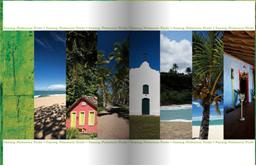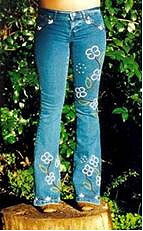Ipanema era só felicidade
Era come se o amor doesse em pax.
Nossa famosa garota nem sabia
A que ponto a cidade turbaria,
esse Rio de amor que se perdeu
Memso a tristeza da gente era mais bela
e além disso se via da janela
Um cantinho de céu e o Redentor.
E meu amigo só resta uma certeza
É preciso acabar com essa tristeza.
É preciso inventar de novo o amor. (Vinicius Morais,Songbook 1, 60)
[Ipanema was happiness itself, / as if love were slumbering in peace. / Our famous Girl of Ipanema had no idea / how her city would fall apart, / our Rio [river] of love that has been lost. / Even sadness then was beautiful / and, besides, from our window we could see / a little piece of sky and the Redeemer. / So, my friend, there remains but one thing to do: / we have to finish with this sadness. / We have to invent love all over again.]
Prologue
Brazil is learning to love again. One of the most important cultural dilemmas in contemporary Brazil is the process of the reinvention of love, self-love, a lovable identity or ‘Brazilian-ness’ ‘all over again’ in order to increase self-esteem after previous failures. Contemporary Brazilian art products, such as samba songs and poems like the one cited above, clearly spread this message. A country with its colonial background, with years of military dictatorship in its recent past, has today grown into a country of extremes of social and economic inequality, a country of contradictions that is in need of a new cosmopolitan self-image and needs to be able to love (and sell) itself in today’s neo-liberal era and to be loved and ‘bought’ by others globally. Thus, in recent years, Brazil has been diligent in producing positive national images for export.
In discussing this psycho-cultural process in this paper, I am going to argue the following: (i) the construction of images of Brazilian-ness is a very complex and ambiguous process containing a large amount of fetishism and determined by post-colonial mimicry; (ii) cultural fetishism contributes to the materialization of the Brazilian national imaginary. Through the Brazilian samba-jeans fetish, I suggest, that various national imaginaries can be studied; (iii) finally, the importance of the exploitation of Brazilian exoticism in these existing fantasies will be discussed and I shall consider whether the samba-jeans myth is part of a bigger political–economic process and whether it contributes to the glamorization of misery for global marketing purposes.
Method
The cultural semiotic method has been applied in this study. A semiotic analysis of visual images constituted the theoretical discussion of the role of Brazilian samba jeans in the process of national image production for export, highlighting the nature of this process and its impact in the wider global context. Visual materials were therefore collected and used as sign-messages to be further decoded and analysed in order to discover their meaning. It is claimed here that the visual materials used in this study reflect contemporary trends in the fashion for jeans produced in Brazil, which are desired and demanded abroad and therefore provide some ideological insight into Brazilian identity construction and how one is expected to be seen abroad and consequently how a woman adjusts her own cultural identity to fulfil this illusionary role. It is therefore presumed, that, as Barthes claimed, the point of semiotics in general is that all social behaviour is political in the sense that it reflects some kind of personal or group interest. Such interests are encoded in what are called ‘ideologies’, which are essentially world views that express the values and opinions of those who hold them. But in these cases the ideological interests that guide social behaviour and fantasies remain concealed behind images that don’t look political at all. In this study the conciliation process is emphasised to enrich our knowledge of how the samba-jeans myth construction has extraordinary political power in contemporary Brazilian culture.
The images used in this study are visual materials; by this I mean that they were read visually. Used images were collected from the following companies in and outside Brazil: Brasil Mania, Samba-Jeans, Brazilian Fashion, Voce Jeans, Brazil Star Fashion, Sawary Jeans, Bivik Jeans, Suez Jeans, Confraria Jeans, GoBrasil Jeans and Eruption Jeans. References for and further details on these companies can be found in the end of this study. Both shops abroad selling Brazilian samba jeans and companies in Brazil producing them for export have brochures or catalogues. These materials were studied at an early stage and images were selected from them. The images selected were those that visually embraced some form of fantasy in relation to Brazilian-ness and the samba-jeans myth. Such fantasy categories included the tropical, the fantasy about Brazilian Creole women, the emphasis on typically Brazilian erogenous zones such as the female bottom, and the carnivalesque. In addition to this, some companies and shops were visited and additional information on the production or selling process was gathered by means of ethnographic field visits.
After the selection of visual materials, the keywords used in accompanying texts were read carefully and the most-used expressions were listed. These included ‘samba’, ‘sexy’, ‘low-cut’, ‘stretch’, ‘unique’, ‘exotic’ and ‘truly Brazilian’. Micro-elements were then identified in the visual materials and used further for image analysis to produce a basic description of the visual content of the material with a rather precise but factual–visual detail. This simple and factual description of the visual image is what Barthes calls the basic anthropological knowledge. This descriptive information was then used to compare this knowledge to the keywords identified in the accompanying visual materials. Any overlapping images found were used for further analysis, namely the tropical image, the post-colonial woman – for instance the Creole female subject as the exotic – and the exaggerated emphasis on the female bottom, and on samba and the carnivalesque. Then I went on to identify higher-order levels of signification and asked various element-related questions (Penn, 2000). These questions included: what cultural context or knowledge is required to read the material? What does it connote? How do the visible elements relate to non-visible knowledge or information? With all these queries I tried to unpack the historical and cultural context of the material and look beyond appearances. Thus I looked for historical–cultural symbolism and fantasies and made sense of the images used in cultural studies. Now I am moving on to an introductory theory regarding the origins and formation of Brazilian-ness in a psycho-historical perspective, to contextualize the phenomenon being studied here in linking the jeans fetish to Brazilian samba culture and selling the materialized fantasy. Then the main fantasies will be described, and finally some notes will be added on its consequences.
History and the Illusion of a Cultural Identity
Brazil has a history of intrinsic mimesis, born out of mimicry and carrying this weight in its own name. The word ‘Brazil’ is a corruption of the European name for the Malaysian sapang tree, from whose reddish wood was drawn an extract not unlike saffron, but which tints less and has no flavour. When this was discovered and trafficked from the tropical South this corresponding part of the New World metonymically assumed an alien name, the nominally transferred referential for the whole territory. According to this view, Pau Brasil, ‘Brazil-wood’, was the first notable item to be exported from this land but was also a designator of the land itself and ultimately of its identity by carrying the name of the first exported object in the name of its own identity. Thus Brazilian-ness also has a complex symbolic sphere in analysis. This nominal condemnation of the colonial rulers, the eye of the outside world, understandably became the dominant perspective and intrinsic for the invention of Brazil’s self-image throughout its history. There were several politico-culturally revolutionary attempts to get rid of this exposed mimicry in Brazil. The most notable took place in the era of gaining independence from the colonial mother country.
In Brazil, as in most post-colonial societies in Latin America and in the Caribbean, after achieving independence from the colonial mother country, national identity, cultural heritage and cultural practices were notions to be reconsidered. In Brazil, too, people in their new fantasized Brazilian-ness tried to find their way towards a sort of real cultural emancipation. This genuine intention was, however, determined by a rather symbolic change in power relations. Power relations, and more importantly the personal and social desires and emotions of Brazilians, were characterized by a profound ambiguity. Although a symbolic change had begun in the form of reorganizing power relations in the new context, including an apparent wave of national rebirth, a reinvention of the non-oppressed and emancipated (or emancipating) Brazilian identity, the new ruling class was caged in by its own ambiguous desire (Aching, 2002; Koningsbruggen, 1997).
This contradiction lay in the position of the new, modern Brazilian exotic or Creole identity: the one who felt sympathy for his or her own cultural exoticism and heritage, the one who put an emphasis on the new ideology of multiracial Brazil, but who at the same time desired to attain socio-economic prestige and the imagined cultural sophistication of the former European colonizers. This struggle of ambiguity and auto-contradiction drove Brazilians to initiate the creation of an exoticized image of their own Brazilian-ness (Sampath, 1997). This psycho-social process has become a political and economic strategy during the last few decades and has formed itself into a national strategy. This national strategy involves the construction, production and sale of idealized images of the nation, and of national identity. This national image production for export was in fact the main concern of Brazilian cultural scholars in the last century.
The most revolutionary and powerful cultural movement in twentieth-century Brazil was linked to the poet Oswald de Andrade (1890–1954), who initiated the Poesia Pau Brasil (Brazil-wood Poetry) in 1925 when he published his famous ‘Brazil-wood Manifesto’. Brazil-wood was his intended symbol for Brazilian culture as an international commodity in its own right; his Brazil-wood Poetry was conceived of as an export product, as something to combat the historical imitation of European models.
Brazilian Samba Jeans and Three Fantasies of Nation
Fantasies and images of Brazilian-ness for export are present in many parts of society, such as in music, dance, fashion, sport, coffee production and cacao culture among others. Here, I am concentrating on three fantasies of Brazilian-ness in their relation to the construction of the Brazilian samba-jeans imaginary that is being sold on the global market. The power of these imaginaries in constructing an image abroad is so strong that, paradoxically, the product of Brazilian samba jeans themselves are sold not for, and as, what they are, but for, and in, their fantasy state. This is to say that Brazilian samba jeans are not as popular as they are abroad because their quality as denim trousers is so extraordinary, but rather because the imaginary through which they are constructed is so attractive, psychologically powerful and irresistibly engaging. The concept of fetishism nicely explains this counter-factual and counter-intuitive behaviour, which allows people to see things in their fantasy state simply as facts. Indeed, the etymological origin of ‘fetish’, which comes, in Portuguese, from fetico, refers to this ambiguity, as it means acting as well as the facticity of things. The concept of fetish, in this view, is directly linked to the reality of things, meant to their thing-ness, their matter-of-fact-ness, through a fantasy. But the power of the fantasy is so strong over the human being who feels the fetishist desire, a longing or displaced desire, for the fetish object, that although he or she knows it is a fantasy this knowledge does not reduce the power of the fantasy over the individual and he or she considers fantasy as fact. This displaced desire is exactly what drives the Brazilian samba-jeans market. In the global market, Brazilian samba jeans are not appealing in their thing-ness (in their facticity) but in their representation of Brazilian-ness abroad (in their fantasy). I shall now discuss three fantasies that construct the myth of Brazilian samba jeans:
- 1. The Tropical Fantasy;
- 2. Fantasies of the Post-colonial Woman and Her Body;
- 3. Samba and the Carnivalesque Fantasy.
The Tropical Fantasy
The word ‘tropical’ refers to things or people related to, situated in or characteristic of the tropics, which are a geographical region on either side of the equator. Fantasized images of the tropical in Brazilian jeans catalogues are overwhelming. These images include bright sunshine, beautiful beaches, tropical fruits, a friendly atmosphere, easy-going behaviour and enjoyable music and dance. The tropical fantasy of Brazil suggests something very important: that it is in our fantasy a relaxing place, far from everyday stresses. The notion of tropical fantasy is characterized by calm, heat or sunshine and beautiful nature with exotic fruits and palm trees.
Powerful tropical fantasy is used by the most prestigious Brazilian jeans company, Sawary Jeans, in its own company imagery. The opening image of the annual Sawary Jeans catalogue shows us various images of calming tropical and exotic nature beauties, putting these images on one double page at the front to bring us, the consumers, to the Sawary Jeans world; to the Tropical Fantasy. These pictures are taking us onto this path and clearly pass the message onto us that Sawary Brazilian jeans are associated with the Tropical World (see Picture 1).

Picture 1 (Photo: Sawary Jeans Company)
As Picture 1 clearly shows, the Sawary catalogue used eight pictures and attached the parts to one another on its opening page. These pictures are lacking in variety and repeat common images of the tropical. These include green, tropical forests; tropical beaches, palm trees and Mediterranean-style architecture. These pictures are then repeated on the following pages, where young women appear wearing various Sawary jeans placed on the pictures introduced on the opening page. In fact, the idea comes through clearly; the tropical images appear far more in the catalogue than any of the jeans models, which clearly reinforces the idea that Sawary is selling a tropical fantasy rather than jeans as things in themselves. Similar images can be found in the brochure of the Samba-Jeans Company, showing the beach at Rio de Janeiro (Picture 2).

Picture 2 (Photo: Samba Jeans Ltd)
This Rio image has, in fact, historically been seen in Brazilian culture as a symbol of optimism. Although Rio de Janeiro is among the most dangerous cities in the world, its charm and its reputation abroad are still powerful. According to Nicholas Brown the apolitical image of Rio de Janeiro has been culturally constructed since the 1950s, through associated images of ‘pretty girls, beaches and the scenic backdrop of a postcard Rio de Janeiro’ (Brown, 2003 :124).
Bivik Jeans also uses somewhat lighter but still tropically inspired photos for product publicity; Brasil Mania uses beach images and the Brazilian Fashion Company does the same with sunshine, a beach and a young woman enjoying the sun as the appealing image by which to sell jeans. The Los Angeles-based Voce Jeans uses a strong tropical, exotic image to advertise and contextualize its jeans collection.
The idea behind the tropical image is a complex one. Today, in the age of anxieties and stressfulness, relaxation and calm become special treasures, new luxury categories. According to the sociologist Domenico de Masi (2004), the concept of luxury has in fact radically changed in the last few years. While historically luxury referred to materials that cost a lot, such as expensive jewellery, cars or homes, today the concept of luxury refers to phenomena that are rare. In fact, one of these rare categories is time for reading, relaxation and calm – today this is seen as a luxury.
On this understanding, Brazil’s jeans fashion wants to convey the message that Brazilian-ness and Brazilian jeans are items of luxury by making people associate them with currently highly valued abstracts such as relaxation and tropical calm.
In fact, this association is used in numerous handbooks and guides on reducing stress in our contemporary high-pressure society, where they recommend (Siegel, 1990; Jensen 2008) ‘creat[ing] a positive feeling by imagining a positive event or calming place e.g. a tropical island’ (Jensen, 2008:2). The same abstraction is used in real-estate or tourist advertisements bringing this fantasy into descriptions, for instance: ‘This home is an example of European-style architecture combined with tropical fantasy. The first floor opens to a beautiful veranda complete with all the tropical plants of the region’ (e.g. Real Estate: Brasil Todo, on http://realestate.brasiltodo.com/).
An understanding of the role of tropical fantasy in the construction of the Brazilian samba-jeans myth is therefore crucially important. It allows us to comprehend two main characteristics of this fantasy in relation to samba jeans. One characteristic is the heat itself, which immediately gives rise to a fantasy of under-dressing and wearing light dresses. This fantasy typically generates further fantasies of the human body, for instance of how the human female body may show more clearly in summery dresses. Secondly, and probably more importantly, the tropical fantasy, which, in fact, is used as an image of relaxation, gives people a sense of enjoyment. The tropical fantasy is associated with enjoyment, which in one way or another also links people to the state of non-working, to free time and relaxation, often associated with laziness. Therefore, the tropical fantasy has enormous psychological power over human beings, and this thought, the fantasy itself, brings the individual what he or she lacks or dreams about. This power is overwhelming and generates a fetishistic energy around the individual. The tropical fantasy alleviates what people dislike about their life and makes them forget about everyday difficulties such as their living conditions in urbanized spaces, far from nature. Furthermore, typically northern and north-western characteristics of daydreams are leaving behind the cold or winter. That is to say that the tropical fantasy satisfies all these needs and opens up the human psyche to the flow of the Freudian pleasure principle. Sigmund Freud, in his work Civilization and Its Discontents (1930/1961), stated that the social reality, civilization, is made possible by individual renunciation. According to Freud, beyond our actions people see the principle of pleasure through which we ceaselessly seek happiness. We seek happiness by pushing away disturbing thoughts. Forgetting about or repressing everyday problems and stress related to work or other activities allows people to stay in a condition that reinforces their illusionary state of satisfaction and happiness and they can enjoy, in the common sense of the word, life. The tropical fantasy provides this path to an illusionary state of satisfaction and through this attraction and appeal this power can be used in favourable image creation for marketing (in this case, specifically export) purposes. Thus, as Freud (1927) argued, a fetishist is able simultaneously to believe in his or her displaced desire or fantasy and to recognize that it is not real but fantasy. However, this does not reduce the power of the fantasy of the displaced desire over the individual. The tropical fantasy works exactly for this reason: through its psycho-power people have constructed the image of Brazilian samba jeans and worked it into a fetish.
The Post-colonial Female Body Fantasy
The long-lasting historical oppression of women in this region had an enormous impact on the contemporary female image and female identity, in particular during the colonial feudalist and early capitalist epoch. This involved female passivity, objectification, endless forms of subordination, distorted imaginaries of the post-colonial female body and related social fantasies. In relation to the samba-jeans image it is important to point out two fantasies here. The first, the sadomasochist fantasy, comes directly from the historical imaginary on female passivity, which developed into a common obsession among Brazilian males, namely that females like being beaten on their bottom. This sadomasochistic positioning of female nature in Brazilian society was a compelling and very widespread fantasy, which still comes through in numerous popular cultural practices and songs. There are endless Brazilian songs exploiting this imaginary by singing about bottom-beating and enjoyment, such as, for instance, Se essa mulher fosse minha (‘If only this woman were mine’) by H. Torres and G. Gomes. This sadomasochistic view of Brazilian women mixes itself with a degrading but likeable Brazilian female fantasy abroad and culminates, as stated, in the fetish of the Brazilian female bottom in and outside the country. Thus it is presumed that, while on the one hand the Brazilian samba-jeans fetish satisfies the needs of the social perversion that produced the imaginary in its being degrading and sadomasochistic, on the other hand it satisfies the obsession of Brazilians who wish to sell idealized and exotic images of a new, cosmopolitan Brazilian identity.
The other female-body-related fantasy comes from the practice of bottom-oriented samba dancing. This fantasy also reinforces the idea (though in a different way from the sadomasochistic imaginary) that the female bottom is a deeply important body part in post-colonial Brazil. The movements of samba largely concentrate on the posterior part of the female body: the bottom. Although samba (originally samba no pe) is a dance that is most often danced impromptu when samba music is played, there are basic movements and several informal rules that involve a straight body and a bending of one knee at a time. The feet move very slightly, only a few inches at a time. The rhythm is 2/4, with three steps per measure. The basic movement is the same to either side, where one foot moves to the outside, rising just before the first beat, lifting on and being replaced on the floor on the one beat. The other foot moves slightly towards the front and closer to the first foot. As the weight is shifted to this inside foot briefly for the next move, then shifted back to the outside foot, so the bottom gets all the main movement of this shifting, and becomes the protagonist body part of the samba dance. In fashion theories body-focused dressing had been conceptualized in the theory of shifting erogenous zones. This states that women have a tendency to accentuate one body part more than others, because once a focus of interest has lost its appeal, another one has to be found (Davis, 1992; Flugel, 1930; Laver, 1969). The Brazilian samba-jeans fashion, however, is able to renew interest in the same body part, the female bottom. In the samba culture the female image does not need this shifting theory because, with its various fantasies, it is able to maintain the sex appeal focused on the bottom. In fact, the most common way of centring attention on the bottom involves concentrating all or any decorations present on the jeans on that body part. This can be observed in the pictures below (Pictures 3, 4, 5 and 6).




Pictures 3, 4, 5, and 6 (Photos: Samba Jeans Ltd.)
Thus the Brazilian samba-jeans case can certainly be seen as a typical example of the bottom erogenous zone, which induced and fed the jeans fetish.
The next fantasy in the post-colonial female body section reflects on current development in our globalized world and turns our attention to recent stereotypes formed on the basis of perceptions of Brazilian immigrants abroad. These most commonly include images of economic disadvantage – more often than not lack of education, degrading forms of work such as prostitution (Sousa, 2005), and cleaning (Bogus, 1995; Sousa 2001; Sousa 2005) – and have built up an ambiguous but beloved imaginary of Brazilian women outside Brazil. This imaginary defines the Brazilian woman in terms of her body and not of her intellect. This type of degrading imaginary construction links the Brazilian female identity to an idealized voluptuous female body, often associated with the colonial image of Creole women as the objects of sexual desire. This imaginary exposes women to indirect objectification and determines the Brazilian female identity abroad. Therefore, the best-selling Brazilian samba-jeans styles always strictly follow the line of the body, leaving the belly area visible thereby embracing the sadomasochistic objectifications, the samba-induced focus on the bottom erogenous zone and the contemporary ambiguous stereotypes of Brazilian female immigrants.
Samba and Carnivalesque Fantasy
Strongly linked to the two previously discussed female fantasies, the samba and carnivalesque fantasies are also powerfully represented. They are equally strongly present in the images of Brazilian samba jeans. More than this, they are after all what define samba jeans as samba jeans, lending the name to this myth. But where does this link to samba culture comes from? Image results show that there are three basic characteristics that induce this fantasy and make the image so appealing. The first one is the carnivalesque fame of body fetish such as nakedness, fantasies of Creole women as colonial sexual objects, and bottom-oriented dance. These points have been discussed previously. Then there is also the desired state of illusionary freedom present in the carnivalesque and samba imaginary, which satisfies the ever-present human demand for rebellion, in particular youth rebellion. Finally, there is the historical association of samba culture with slave resistance, which makes it appealing abroad and makes possible an identification of the ever-repressed forces of resistance in everyday life.
Carnivalesque Rebellion
Jeans are not used as formal attire; they are ordinary clothes worn not for work but in one’s spare time, or in rather informal activities. In Brazil, samba is also closely linked to free time, carnival and the carnivalesque in general. This fact has encouraged Brazilians to represent themselves through, and foreigners to identify Brazilian-ness with, happiness and festivity, and has constructed an imaginary of the Nation of Festivity. Traditionally, the celebration of carnivals, the popular celebration of festive rituals and practices such as folk culture, in the purest Bakhtinian sense, were an expression of inversion, sanctioned deviance and the reversal of norms that stood opposed to official festivities. Carnival theory holds that carnivals originally provided an outlet for impulses that were normally suppressed. Bakhtin called carnivals ‘people’s second life’ (Bakhtin, 1968, p. 8). It was the realm of the dream as a wish fulfilment of human beings before the censor, the super-ego, could declare repression, mark boundaries and punish transgressions. Representations of the erotic, the profane and the grotesque – the good, the bad and the ugly, rooted in the most archaic depths of the unconscious, find momentary expression, indeed valorization, in carnival, where boundaries of wish, dream and reality are blurred. Thus the understanding of carnival well explains why ‘samba’ is an adequate word to set in motion a series of fantasies linked to happiness, festivity and rebellion, and why it is used as a representative word in the jeans trade to reinforce imaginaries of Brazilian-ness.
Slave Resistance
Samba as a type of music and dance was a manifestation of a variant of slave resistance which developed in direct resistance to, and as a strategy for survival of, colonial oppression. In Brazil, samba has historically developed as a critique of colonial slavery, and it has been not only an initiative form but also a spontaneous expression in an organized form by the subordinated (Cabral, 1996). The term samba was first used in a written document on 12 November 1842 by Edison Carneiro in the Journal Carapuceiro. At that time samba did not refer to a specific kind of music and dance but rather to a variety of music and dances of the black slaves. Carneiro talked about the area nacional do Samba, a kind of ‘national air of samba’, which was interpreted by the Brazilian musicologist Sergio Cabral (1996) as a collective name including the drum of Minas, the Creole of Maranhao, the samba circle and the bate-bau of Bahia, and the jongo rhythm of Espirito Santo, of Rio de Janeiro and of Minas Gerais. For four main reasons, however, one type of black slave music and dance became the most popular and the official version of samba, that of Rio de Janeiro. Internal migration to Rio de Janeiro was very heavy at that time because there was a decline in coffee cultivation in the states of Rio and Minas Gerais, and, in addition, the end of the Canudos War, the failure of the socialist revolution in Bahia and, more importantly, the official end of slavery in Brazil in 1888 led many afro-descendants to travel to the city. In Rio they built their barracks in the northern part of the city, in the mountains and woods, and therefore the home of samba is called morro, referring to these woods. They formed favelas (shanty towns) and continued their fight for recognition after the formal liberation of slaves, where they practised this popular expression of resistance: samba. This samba culture gives a sensation of rebelliousness, a dissenter or non-conformist sensation to youth which can be seen on the following models (Pictures 7, 8, 9, 10 and 11).





Pictures 7, 8, 9, 10 and 11. Photos: Brazil-Fashion Company
Conclusion
The abstractions presented and described in this paper all reinforce the idea that an analysis of the jeans-fantasy-export paradigm draws out and represents a true fantasy industry, which integrates imagination, politics and the market by working them into a fetish object: Brazilian samba jeans. It has been argued that the idea of fetishism helps us to explain how people can desire a thing through fantasy and actually consider this fantasy a fact. The fetishistic desire for a thing is driven by a fantasy quality that the thing itself does not in reality possess. But a recognition or knowledge of the state of fantasy on the part of the fetishist does not at all reduce the power of the desire for the material over the individual in its fantasized state. This is certainly where the key psychoanalytical process of fantasized Brazilian-ness and the representation of the jeans object was explained and understood; we do not know exactly what it is but we imagine and desire it, and this psychological circle is able to reproduce a positive imaginary of Brazilian-ness in the case of samba jeans by linking to them the whole world of the fantasized identity of Brazil and Brazilian-ness.
But it would be naïve to think that these fantasies are constructed just for the sake of enjoyment and that there will be no political and economic consequences. This complex and ambiguous fantasy market and jeans trade in and outside Brazil is a serious and complex identity industry linking politics, fantasy and economics. Thus the phenomenon of Brazilian samba jeans is a political, psychoanalytical and economic notion. It is political, because the political changes since the end of colonialism have produced the post-colonial subject who is trying hard to gain international prestige by means of a strategic emphasis on its exotic otherness in order to attain the privileges of the former colonial elite, and in its otherness it is condemned to an ambiguous mimicry. It is a psychoanalytical notion because during the last few decades the jeans have clearly become, and now function as, a fetish object associated with and representing the new Brazilian-ness. In that, they try to exploit the unconscious fantasies and desires of people abroad. Thirdly, it is economic as it is part of a complex and widespread industry aimed at becoming more appealing to the global eye. According to Aching (2002), this is a process of internalization and globalization of local culture, which seeks economic gain. These initiatives to construct and export idealized and fantasized images of Brazilian-ness by means of a concrete object or product, such as Brazilian samba jeans, are used to attract foreign investment. On this understanding the post-colonial socially peripheral is the protagonist of this fantasy export, who is concerned for a proper image abroad. Therefore, I claim that the function and meaning of Brazilian jeans is not in their thing-ness, but in their representation of Brazilian-ness. These factors, I suggest, need to be taken into consideration in the interdisciplinary study of the export of Brazilian identity and its consequences for the reproduction of inequalities in Brazil and worldwide. Concluding this idea, it is important to embrace that while accepting that image construction through fantasies is a necessary practice of human interaction. According to Louis Althusser (1984), a series of fantasies, the imaginary, is embodied in our social relations. We imagine how to relate to each other and to material properties. The social imaginary conditions our social existence through naturalizing existing social relations (Althusser, 1984). However, there is one element in this representation that is problematic, and that is the use of the socially peripheral or semi-peripheral condition of the people who are fantasized through Brazilian samba jeans. The fantasies presented in this study, namely the tropical, post-colonial women and carnivalesque samba, are all related to socially peripheral groups of people. The protagonists of these fantasies are from the global south (tropical), Creole or immigrant women (post-colonial women), and slave descendants (carnivalesque samba). The exploitation of their disadvantage as an aesthetical representation becomes problematic for two main reasons. If aesthetic representation does not have ideological limits it will mean that any peripheral or semi-peripheral condition can be represented aesthetically and therefore enjoyed. If the Creole woman or the misery of the Amazon is to be aesthetically represented, then it is at some level enjoyed. At this point samba jeans become problematic and subject to critique because the protagonists of fantasies constructing their sex appeal, who make them into a myth, would not necessarily agree on such a representation. Furthermore, these images are used for marketing purposes, which means that somebody can make a profit from them. On the grounds of these points, I suggest, the export of Brazilian samba-jeans remains problematic.
Works Cited
- Aching, G. (2002). Masking and Power. Minneapolis: University of Minnesota Press.
- Althusser, L. (1984). Essays on Ideology. London: Verso.
- Bakhtin, M. (1968). Rabelais and His world. Cambridge: The MIT Press.
- Bogus, L.M.M. (1995). Migrantes Brasileiros na Europa Occidental uma abordagem preliminar. In N.L. Patarra (Ed.) Emigração e imigracao internacionais no Brasil Contemporâneo. Campinas, São Paulo.
- Brown, N. (2003). Bossaposbossa: Or, Postmodernism as Semi-Peripheral Symptom. The New Centennial Review 3.2 Summer p.117-159.
- Cabral, S. (1996). As Escolas de Samba do Rio de Janeiro. Rio de Janeiro: Lumiar Editora.
- Davis, F. (1992). Fashion, Culture and Identity. Chicago: The University of Chicago Press.
- De Masi, D. (2004). Non c’è progresso senza felicità: un dialogo sui limiti e i vantaggi della globalizzazione. Milano: Rizzoli.
- Flugel, J.C. (1930). The Psychology of Clothes, London: Hogarth Press.
- Freud, S. (1927). Fetishism. The Standard Edition of the Complete Psychological Works of Sigmund Freud, Vol 22. London: Hogarth Press.
- Freud, S. (1961). Civilization and its Discontents. New York: W. W. Norton & Company.
- Jensen, D. (2008). Ten Tools to Manage Stress. Imaging and Radiation Therapy Biweekly 13.10.08.
- Koningsbruggen, P. (1997). Trinidad Carnival: the Quest for National Identity. London: Macmillan Education Ltd.
- Laver, J. (1969). A Coincise History of Costume and Fashion. New York: Scribner’s.
- Mannoni, O. (2003). Je sais bien, mais quand-meme. In M.A. Rothenberg, D. Foster, S. Zizek, (eds.), Perversion and the Social Relation. London: Duke University Press.
- Penn, G. (2000). Semiotic Analysis of Still Images. In M. W. Bauer and G. Gaskell (eds.) Qualitative Researching. London: Sage.
- Siegel, J. (1990). Stressful Life Events and Use of Physician Services among the Elderly: The Moderating Role of Pet Ownership. Journal of Personality and Social Psychology 58, 6 p.1081 – 1086.
- Sousa, I.C.F (2005). The Social Integration and the Brazilian Empowerment of Brazilian Immigrants in Rome at: The XXV IUSSP International Population Conference, Tours, France.
- Sousa, I.C.F. (2001). Health education policies and poor women in Brazil: Identifying myths that undermine their empowerment. Westport: Albert Publishing.
- Zizek, S. (2003) Perversion and the Social Relation. London: Duke University Press.
Copyright (c) 2011 Szilvia Simai

This work is licensed under a Creative Commons Attribution-NonCommercial 4.0 International License.